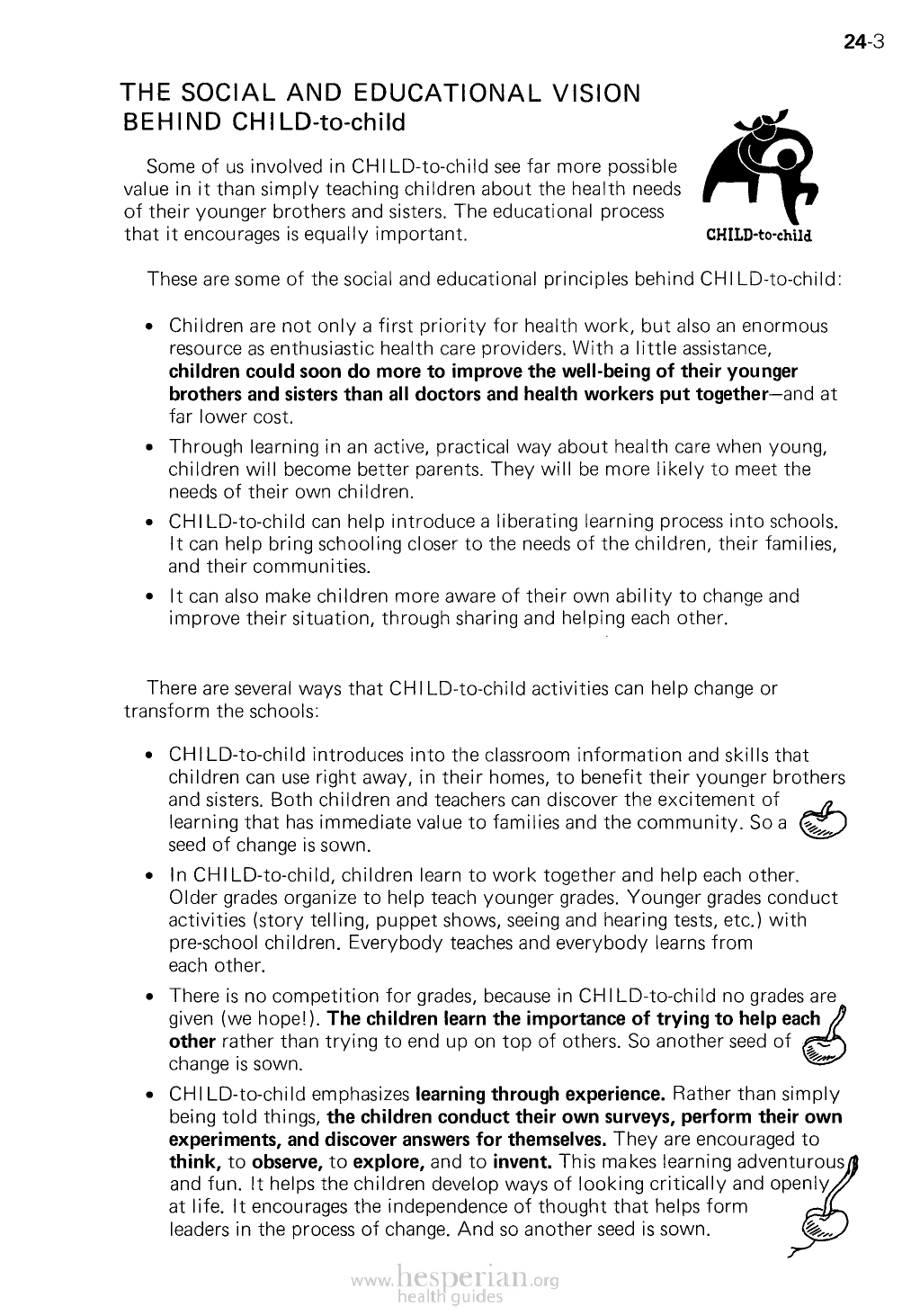
24-3
THE SOCIAL AND EDUCATIONAL VISION
BEHIND CHILD-to-child
Some of us involved in CHILD-to-child see far more possible
value in it than simply teaching children about the health needs of
their younger brothers and sisters. The educational process that it
encourages is equally important.
CHILD-to-child
These are some of the social and educational principles behind CHILD-to-child:
• Children are not only a first priority for health work, but also an enormous
resource as enthusiastic health care providers. With a little assistance,
children could soon do more to improve the well-being of their younger
brothers and sisters than all doctors and health workers put together—
and at far lower cost.
• Through learning in an active, practical way about health care when young,
children will become better parents. They will be more likely to meet the
needs of their own children.
• CHILD-to-child can help introduce a liberating learning process into schools. It
can help bring schooling closer to the needs of the children, their families, and
their communities.
• It can also make children more aware of their own ability to change and
improve their situation, through sharing and helping each other.
There are several ways that CHILD-to-child activities can help change or
transform the schools:
• CHILD-to-child introduces into the classroom information and skills that
children can use right away, in their homes, to benefit their younger brothers
and sisters. Both children and teachers can discover the excitement
of learning that has immediate value to families and the community.
So a seed of change is sown.
• In CHILD-to-child, children learn to work together and help each other. Older
grades organize to help teach younger grades. Younger grades conduct
activities (story telling, puppet shows, seeing and hearing tests, etc.) with pre-
school children. Everybody teaches and everybody learns from each other.
• There is no competition for grades, because in CHILD-to-child no grades are
given (we hope!). The children learn the importance of trying to help
each other rather than trying to end up on top of others. So another seed
of change is sown.
• CHILD-to-child emphasizes learning through experience. Rather than
simply being told things, the children conduct their own surveys, perform
their own experiments, and discover answers for themselves. They are
encouraged to think, to observe, to explore, and to invent. This makes learning
adventurous and tun. It helps the children develop ways of looking critically ana
openly at life. It encourages the independence of thought that helps form
leaders in the process of change. And so another seed is sown.